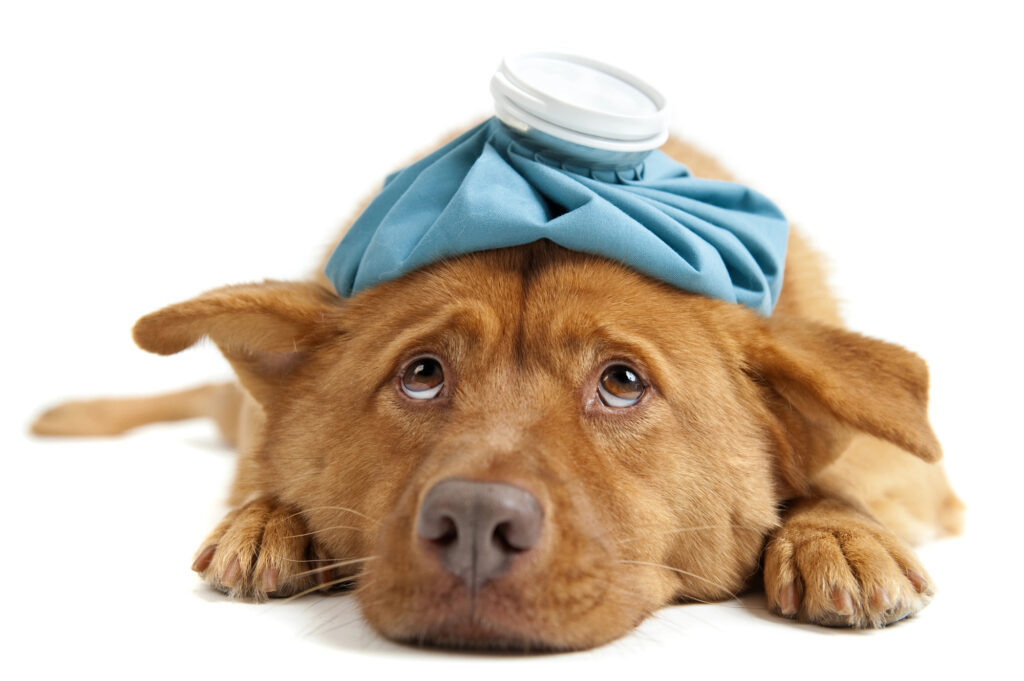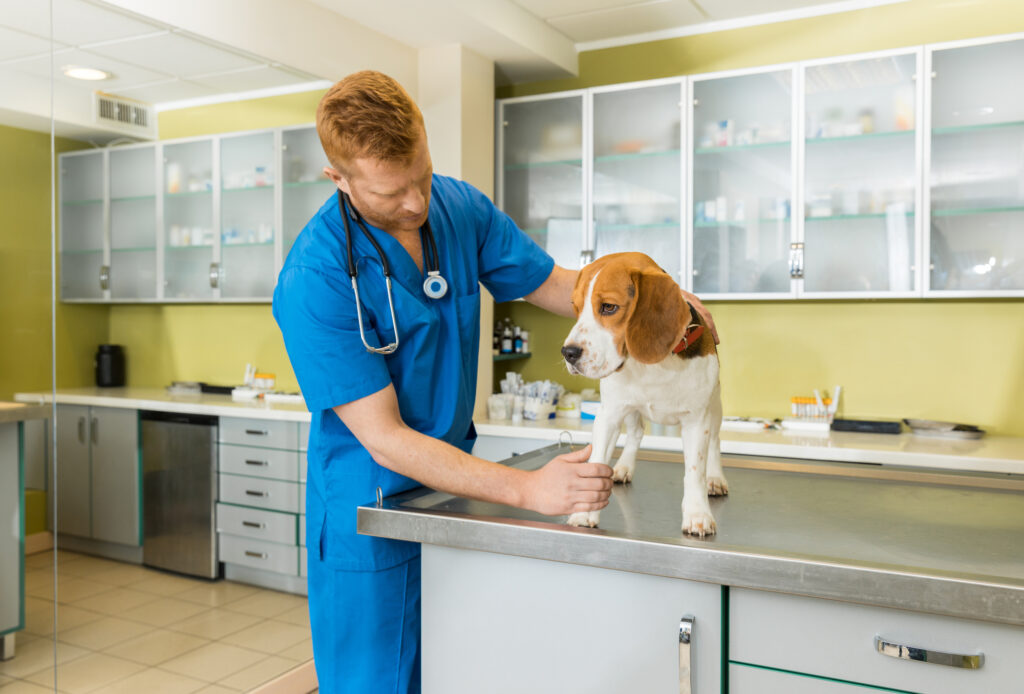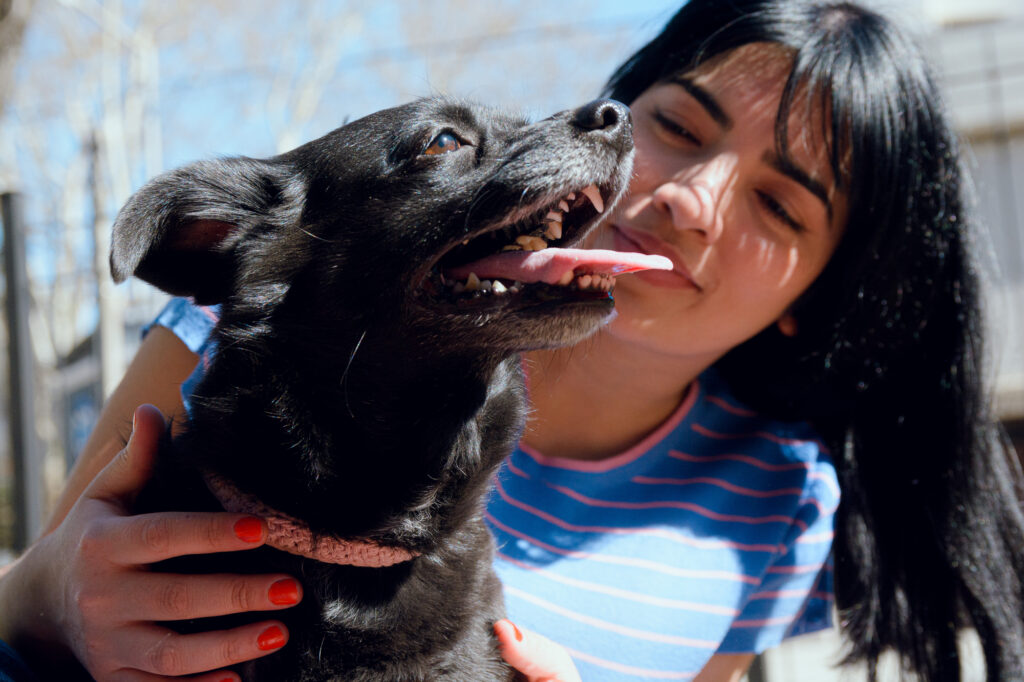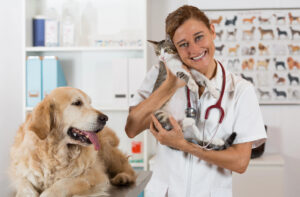
Sick Dog Symptoms: Learn What to Watch For
If you are a dedicated dog owner, you have a responsibility to keep an eye on your pet’s health. Being able to identify the signs of a sick dog goes beyond simply treating them when they’re sick; it also allows you to catch health problems early and prevent them from getting worse. Because it usually results in a better prognosis and faster, more effective therapy, early detection of disease is vital. In addition to discussing typical signs of many dog diseases, this article explores a mysterious new illness that has been plaguing canines in the US recently. If you want to keep your dog healthy and happy, the best thing you can do is to be informed and be watchful. If you want to be better prepared to help your beloved pet when they’re sick, read on to find out what these symptoms mean.

Boarding Clients!*Discount does not apply during holiday/peak rate periods.

Common Symptoms of a Sick Dog
1. Changes in Urination
Conditions such as renal illness, infections, or an increase or reduction in urine output, as well as straining to pee or the presence of blood in urine, all be rather concerning.
2. Vomiting or Diarrhea
Vomiting or diarrhea every once in a while, might not be cause for alarm, but if it continues or is coupled with other symptoms like fatigue or lack of hunger, it could point to a more significant problem.
3. Whimpering or Vocalizing
When a dog is in pain, it may whine, groan, or bark more frequently, particularly in response to physical contact or movement.
4. Poor Appetite
A dog’s sudden lack of hunger, especially in an otherwise healthy canine, may indicate that it is sick.
5. Excessive Panting
While it’s natural for dogs to pant, persistent or heavy panting could indicate heatstroke, discomfort, or even life-threatening conditions like heart failure or respiratory problems.
6. Coughing or Breathing Problems
Infections like kennel cough, heart problems, or persistent wheezing can all be signs of trouble breathing.
7. Low Energy
Hypothyroidism, diabetes, heart disease, and other conditions can manifest with a marked decline in energy levels or an unwillingness to exercise.

8. Pale Gums
If your gums are unusually pale, it may be a sign of anemia or circulation issues, both of which require immediate medical attention.
9. Eye Issues
Squinting, redness, discharge, or swelling could be signs of allergies, conjunctivitis, or even glaucoma, which are more serious eye disorders.
10. Behavioral Changes
Some symptoms of pain or illness manifest as unusual behaviors, such as hiding, becoming aggressive, or being excessively clinging.
11. Scooting
A full anal gland, an infection, a parasite, or an allergy could be the cause of frequent scooting.
12. Eating Poop
Even while it’s not necessarily an indication of sickness, this behavior can occasionally point to malabsorption syndrome or other health problems.
Elaborating on the Mystery Illness Affecting Dogs in the U.S.
Key Characteristics of the Mystery Illness:
Sudden Onset
A large number of the documented cases were dogs that were in good health before suddenly developing symptoms.
Diverse Symptoms
Vomiting, diarrhea, fatigue, appetite loss, and coughing are some of the symptoms of the sickness. It is difficult to identify and treat properly due to the wide diversity of indications.
Geographical Spread
The disease appears to be spreading from its initial reported locations and now affects dogs all over the nation.
Unknown Cause
The precise origin of the disease has not been found despite thorough investigation. To what extent is it environmental, bacterial, viral, or some other cause? That is the question that researchers and veterinarians are attempting to answer.
Response and Recommendations:

Veterinary Attention
If a dog exhibits any unusual symptoms, particularly those that fit this illness’s criteria, its owner should not hesitate to consult a veterinarian.
Research and Investigation
Institutions dedicated to veterinary research and health are hard at work studying the disease. They are looking for patterns and running tests to find out what’s causing it.
Preventive Measures
Important hygiene, staying up-to-date on vaccines, and staying away from locations with documented instances are all important general preventative steps to take, even when the actual cause is unknown.
Community Awareness
By keeping themselves informed and reporting any unusual symptoms in their dogs, pet owners may help veterinarians track the spread and origin of this sickness.
Importance of Awareness
Being cautious about pet health is crucial, especially given the uncertainty surrounding this ailment. Dog owners need to keep a careful eye on their pets and let their vet know if anything out of the ordinary happens with their health or behavior. To manage this new health problem and ensure the safety of dogs nationwide, it is essential to raise awareness and take swift action.
In conclusion, dog owners may better safeguard their pets from this mysterious illness by keeping themselves informed, keeping a close eye on their pets, and not wasting time in obtaining veterinarian care when symptoms appear.
At-Home Health Exam Tips
You can assist in detecting early symptoms of sickness in your dog by doing frequent health checks at home. Some suggestions:
Skin: Look for redness, lumps, scrapes, scabs, or swelling on the skin. To check for fleas or skin issues, look around.
Ears: Be on the lookout for mites or infections that manifest as peeling, scabs, a bad smell, or discharge.
Eyes: It is good for the eyes to be bright, clear, and focused. Issues such as redness, drainage, or swelling may warrant attention.
Mouth: The natural color of gums is pale pink, and neutral-smelling breath is also normal. Any signs of red gums, dark streaks, or bad breath could be a sign of dental problems.
Nose: Keep your nose clear of any buildup of mucus. An issue may exist if there is dryness accompanied by flaking or redness.
Tail: Look under the tail for any indications of parasites.
Feet: Find any signs of infection, such as swollen or damaged nails, wounds, or sores.
Benefits of Being Vigilant About Your Dog's Health
Taking a preventative approach to your dog’s health, rather than merely reacting to symptoms, can have several advantages for you and your pet. The benefits of keeping a close eye on your dog’s health are as follows:
1. Early Detection of Health Issues
-
More effective and faster therapies are possible when symptoms are identified early.
-
A better prognosis is possible for many illnesses and ailments if they are detected early on.
2. Improved Quality of Life
-
Health and Happiness: If you catch a health problem early on, you can spare your dog a lot of misery.
-
Longevity: Vigilance can contribute to a longer, healthier life for your pet.
3. Cost-Effective Pet Care
-
Medical Expenses Decreased: Less intrusive and costly care is typically the result of early therapy.
-
Vaccinations and annual checkups are examples of preventive treatment that can save money in the long run compared to treating illnesses after they have progressed.
4. Strengthened Bond with Your Pet Trust and Security
-
Regular care and attention make your dog feel loved and secure.
-
By keeping a close eye on your dog, you can learn his typical habits and health status, which will help you recognize when something is wrong.

5. Educated Decision
-
You can make better decisions for your dog’s care if you are well-informed about their health needs.
-
Working Together with Veterinarians: Having regular checkups with your vet will give you a better idea of how your dog is doing overall.
6. Community Health and Safety
-
To control the spread of infectious diseases, it is important to keep an eye on your dog’s health.
-
Vigilance adds to the greater community’s well-being, as some dog ailments can have ramifications for human health.
7. Peace of Mind Reduced Anxiety
-
Knowing that you are doing everything you can for your dog’s health can reduce stress and anxiety as a pet owner.
-
One of the best parts of having a dog as a pet is watching it run around and play with its new friends. This is especially true when the dog is in good health.
8. Response to Environmental Changes
-
Being alert allows you to swiftly adjust to emerging health risks, such as the recent mystery sickness, protecting your dog from an ever-changing environment.
As a responsible pet owner, you must keep a close eye on your dog’s vital signs. It gives you, the owner, a sense of accomplishment and contentment while simultaneously guaranteeing your dog’s health and pleasure. You can ensure a long, healthy, and happy life for your pet by being a responsible and proactive owner.
Conclusion
For the sake of early diagnosis and treatment, it is critical that you keep a close eye on your dog’s health and know the signs of illness. Regular vet visits and self-examinations are key. Do not hesitate to contact your veterinarian if you observe any of the symptoms mentioned, particularly in light of the recent mystery illness. The health and well-being of your dog can be drastically improved if you act quickly.
FAQ: Dog Health and Vigilance

What are the first signs I should look for to tell if my dog is getting sick?
Dogs may exhibit changes in behavior, abnormal vocalizations, changes in urination, changes in water intake or hunger, lethargy, coughing, vomiting, diarrhea, and changes in water consumption or appetite as early indicators of sickness. Keep a careful eye on your dog and report any changes in his routine or behavior that you see.
How often should I perform a health check on my dog at home?
Checking your dog’s vitals once a week is a smart idea. Checking for changes in their behavior and physically inspecting their fur, skin, eyes, ears, nose, and paws are all part of this process.
When should I take my dog to the vet instead of treating them at home?
If your dog displays any sudden and severe symptoms, such as trouble breathing, acute pain, or collapse, or if their symptoms linger for an extended period of time, such as vomiting, diarrhea, coughing, or lethargy, it is recommended that you take them to the doctor. You should also seek the advice of an expert if you become worried about any changes in their appearance or conduct.
Can regular vet check-ups prevent illnesses in dogs?
The early diagnosis and prevention of certain disorders can be facilitated by regular veterinary check-ups. Physical examinations, immunizations, parasite management, and testing to detect health problems in their early stages are common components of these checkups.
What should I do if I notice a sudden change in my dog's behavior?
Stay vigilant for any additional symptoms of sickness and seek the advice of your veterinarian if you observe a sudden shift in your dog’s behavior. Alterations in behavior are frequently the initial sign of medical issues.
Is it normal for a dog's eating habits to change as they age?
As dogs become older, it’s normal for them to have different dietary patterns. They might get dietary restrictions or consume less since they’re not as active. But you should take your pet to the clinic if you notice a dramatic or unexpected shift in its appetite.
How can I tell if my dog is in pain?
If your dog is limping, unmotivated to move, hunched over, too sensitive to touch (whimpering, growling, snapping), underweight, or otherwise acting out of character, it could be due to pain. Talk to your vet right away if you think your dog is hurting.
What are the common signs of aging in dogs?
Aging dogs often exhibit a decline in activity level, increased snoozing, impaired hearing and vision, stiffened joints, graying coats, and reduced cognitive capabilities. To address health complications connected to aging, regular veterinary care is crucial.
Can changes in my dog's environment affect their health?
Yes, your dog’s health can be impacted by changes in their environment, such as relocating to a new house, changes within the family, or even shifts in the weather. A variety of physical or behavioral symptoms may emerge as a result of the stress caused by these changes.
What preventive measures can I take to keep my dog healthy?
A healthy lifestyle with frequent dental care, parasite control, immunizations, a balanced diet, and frequent veterinary checkups are all great ways to keep your pet from getting sick. You can detect possible health problems in your dog early if you maintain a careful watch on any changes in his behavior or look.


















